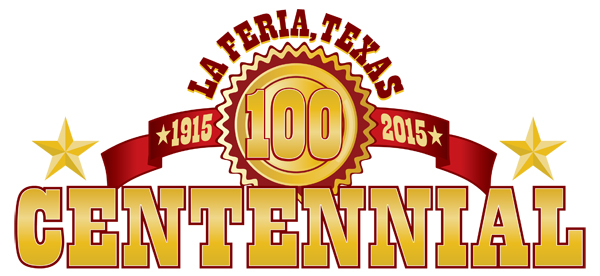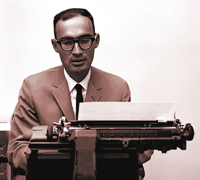- La Feria Community Holds Succesful Business Mixer Event
- Little Nashville to Take Place in Downtown Mercedes
- Lions Basketball Captures District Gold
- La Feria ISD Students Compete in Regional Chess Tournament
- Lions End First Half of 32-4A on a High Note
- La Feria ISD Held Another Successful Parent Conference
- Strong Appearance for Lions at Hidalgo Power Meet
- LFECHS Students Get to Meet Local Actress
- Students Participate in Marine Biology Camp
- Two LFECHS Students Qualify for All-State Band
La Feria’s Great Industrial Philanthropist
- Updated: June 1, 2015

The city of La Feria is celebrating its 100th year anniversary and to commemorate the occasion we are digging deep into our archives each week to bring you images and stories from La Feria’s colorful past.
The following is part of a series of historical articles written by Michael Lamm that originally ran in the La Feria News in 2003. They are being reprinted with the author’s permission.
Legend had it that right after the big hurricane of 1933, J.C. Dunn went around the Valley picking up corrugated tin that had blown off many, many roofs. Supposedly he used the tin to put up his first packing shed. I don’t know if this story was true, but lots of people in La Feria repeated it back in the 1940s and ‘50s, and I, for one, surely came to believe it.
I remember J.C. Dunn as a tall, imposing, powerfullooking man with saltandpepper hair and a crewcut. He marched when he walked, and he mostly stayed within walking distance of the industrial complex he’d built alongside the railroad tracks in the northeastern part of town. By the time I became aware of J.C. Dunn’s empire, it sprawled over several blocks along East First Street and contained a number of not only tin buildings but substantial yellowbrick packing sheds and his own red brick home on the same property.
My grandfather, Ignaz Lamm, worked for J.C. Dunn during World War II. My grandfather had been a metalsmith in Germany, and he needed a job when my parents brought him to La Feria in 1940, so Mr. Dunn put him to work soldering tin cans. In those days, cans arrived as sheet stock, and the cannery had punch presses that cut and rolled the flat metal. My grandfather and other workmen then handsoldered the side seams. The round bottoms got crimped on by machine before the cans were filled, and the tops were crimped on afterward.

La Feria industrialist, J.C. Dunn, gave the author this 1934 Buick sedan for free as a reward for getting it running. Photo: blog.hemmings.comLa Feria industrialist, J.C. Dunn, gave the author this 1934 Buick sedan for free as a reward for getting it running. Photo: blog.hemmings.com
A pervasive cannery odor often hung over La Feria, depending on the season and what fruits and vegetables were being processed. Sometimes the town smelled like grapefruit juice, sometimes like frying bacon (this was from the making of cottonseed oil at the various gins), sometimes like tomato soup, sometimes like pineapple juice.
Pineapples were trucked in from Mexico, and La Feria’s streets were often black with the sugary residue of pineapple juice that leaked from the incoming trucks. When these blackened road surfaces got wet, they were as slippery as axle grease, but the pineapple juice soon washed away during a rain.
J.C. Dunn’s canning and shipping operation ranked as the biggest, liveliest business in La Feria at the time. I have no idea how many people he employed, but it had to be a goodly portion of the town’s population.
I knew J.C. Dunn’s son, James, in high school. We were both interested in old cars, and James owned a Model T coupe. I’d go over to his house, and together we’d explore the sheds and semiabandoned outbuildings on his father’s property.
J.C. Dunn was one of those people who never threw anything away. Out on the weedy back lots behind the cannery, for example, we found a fleet of aluminum Nash Quad military trucks from World War I. Bulging cans of overripe tomato and pineapple juice stood among the trucks in great, messy heaps. Occasionally we’d hear a can explode in the hot sun.
Inside a nearby abandoned powerhouse, James and I discovered a huge generator attached to a fourcylinder diesel engine that stood nine feet tall. Another shed contained cartons of new but obsolete, neverused auto parts, including stuff for Model T Fords.
In one such shed, parked in a dark corner, we came across a dusty green 1934 Buick sedan that obviously hadn’t moved in years. James had never seen the car before. I asked whether his dad might want to sell it, because the body and interior were in good condition. James said he didn’t know, but we could ask.
So we walked unannounced into J.C. Dunn’s private office, and I asked Mr. Dunn if he’d sell me the Buick. He told me it hadn’t run since the war, and if I could get it going again, I could have it for free. For free? Yes, for free! Well, what better challenge could a carstruck 15yearold ask for?
James and I spent the next two weeks working on that Buick. We didn’t really know what we were doing, but we were learning. We must have disassembled the engine half a dozen times, cleaned everything and put it all back together. But time after agonizing time, the Buick refused to start. Finally, I went back to the shed that contained those old auto parts, found a new ignition coil and condenser, installed them, and lo and behold, the engine fired right up.
True to his word, J.C. Dunn signed the Buick’s title over to me. Why he didn’t include James in the deal I don’t know, but I wasn’t asking questions.
I thanked Mr. Dunn and drove the car home. Four days later, a fellow stopped me on Main Street and asked if I wanted to sell the Buick. I said sure. The guy paid me $30 cash. That $30, and especially the immediacy of it, felt mighty good. But it took me years to realize that J.C. Dunn, the man who’d made his fortune adding sweat equity to a windfall of corrugated tin, was teaching me how to do the same.
|
Do YOU have any photos, books, or stories that might help us piece together La Feria’s storied history? If so please email us or call our office at 956-797-9920 and let us know!

 ABOUT THE AUTHOR
ABOUT THE AUTHOR
